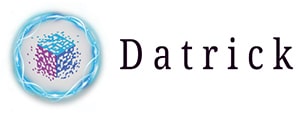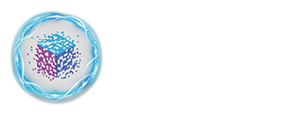
The Power of Data Governance Framework
Data Governance Framework is a set of guidelines and policies designed to ensure data security, accuracy, completeness, usage, and protection. It provides an organized approach to managing the lifecycle of data within an organization. It is useful to protect data from unauthorized access or malicious activities.
The framework helps organizations maintain consistency in their operations by providing structure and control over all data-related activities. By establishing a Data Governance Framework, organizations can improve the quality of their services and products while ensuring compliance with applicable laws and regulations.
We are going to discuss the importance of implementing a Data Governance Framework within any organization with sensitive information. We’ll focus on what constitutes such a framework as well as its advantages and challenges. Furthermore, we will discuss best practices for setting up such a framework and go over examples of successful implementations in various industries.
Core Components of a Data Governance Framework
Data governance is an essential element of modern organizations, allowing them to effectively manage their data assets. A successful data governance framework requires the foundation of core components for it to be effective and efficient. These core components include:
- Data ownership
- Risk assessment
- Governance policy
- Data quality
- Privacy
Organizations must first establish clear ownership over their data. They must also assign roles and responsibilities related to the management of this asset. This will provide clarity on who has decision-making authority when making changes that affect this resource.
Additionally, organizations should conduct assessments regularly in order to identify potential risks associated with managing the data. The data is not always available for processing decisions based on it. A comprehensive set of policies that document how the organization stores, protects, and secures access to these resources can prove to be helpful. These policies should also detail acceptable uses and behaviors surrounding their data.
The ultimate goal of a robust data governance framework lies in ensuring high levels of accuracy, reliability, and security. This is in every aspect related to handling sensitive information. Organizations should establish data quality objectives upfront in order to monitor key performance indicators. For example, completeness and timeliness while protecting both customers’ personal information as well as organizational secrets from unwanted disclosure through enforcing rigorous standards regarding privacy compliance regulations.
By consistently adhering to these tenets, an organization can ensure its operations are always running at maximum efficiency. This means using trustworthy records going forward into the future.
Designing a Scalable and Adaptable Data Governance Framework
The creation of a scalable and adaptable data governance framework is essential for an organization’s success. It allows the company to ensure its security, stewardship, quality, privacy, and lifecycle requirements are okay throughout its data operations. In developing such a structure, four key factors are important:
- Data security: All data is secure from unauthorized access or manipulation through automated processes and protocols. These processes and protocols provide encryption, authentication, authorization, and monitoring.
- Data stewardship: Organizations need to identify who will have ownership over each dataset. This is done in order to make sure all usage remains compliant with established policies and regulations.
- Data quality: Data accuracy needs to be maintained at all times so proper decisions can be made quickly without the risk of inaccuracy or corruption of the underlying information being analyzed or reported on. This requires rigorous testing of incoming records as well as periodic reviews of existing datasets for any hidden errors or discrepancies.
- Data lifecycle: Companies must develop procedures for managing the entire cycle of their data assets. From acquisition, storage/usage, transfer/sharing, and eventual disposal/deletion when no longer needed or required due to legal stipulations regarding privacy rights, etc.
Each component outlined above plays an important role in helping organizations better manage their data resources. The components are designed to ensure compliance with applicable laws and regulations related to data protection and privacy.
By following best practices in these areas, companies can reduce risks associated with mishandling sensitive information. Also, companies can increase efficiency across multiple departments which rely heavily on accurate reporting generated from quality datasets housed securely within the system infrastructure and ensure compliance with applicable laws and regulations.
Aligning Data Governance with Business Objectives
Having a well-defined data governance framework is essential for any organization. It can help to align business objectives with data quality, risk management, process automation, access controls, and data security. The goal of this section is to explain how organizations can effectively achieve that alignment:
- Data Quality is an important factor when designing a scalable and adaptable data governance framework. It helps ensure reliable information sharing between different groups within the company. To ensure proper Data Quality, organizations should implement a wide range of measures. Some examples are establishing accuracy guidelines or setting up monitoring systems.
- Risk Management is also critical since it will enable the organization to identify areas where data could be compromised due to external threats or internal negligence.
- Process Automation provides another way for companies to improve efficiency by automating certain processes related to data handling and storage.
- Finally, Access Controls and Data Security are key components of any successful data governance framework. They protect confidential customer and employee information from unauthorized access or misuse.
By leveraging these techniques, organizations can create an effective data governance framework. This framework ensures high levels of reliability while safeguarding sensitive corporate assets. Through careful implementation of accurate controls, automated procedures, and secure protocols, businesses can drive greater value from their data while staying compliant with legal regulations at all times.
Data Governance Maturity Models
Data Governance Maturity Models (DGMM) is a framework used to measure the effectiveness of an organization’s data governance program. It is used to define, assess and improve the maturity level of data governance activities. Defining maturity levels involves identifying the current capabilities of an organization’s data governance program, as well as its goals for improvement.
Assessing the maturity of the program requires an evaluation of the effectiveness of data governance activities and the identification of strategies for improvement. In order to implement strategies for improvement, organizations should identify specific goals and objectives for their data governance program. They should also develop a plan for achieving them.
Finally, organizations should monitor the progress of their data governance program and measure its success over time.
Defining Maturity Levels
Defining maturity levels includes factors such as data security, data privacy, risk management, data quality, and compliance requirements. Establishing these metrics will provide a baseline from which organizations can measure their current capabilities. This will be compared against industry standards and best practices.
The process also allows organizations to identify areas where improvement is needed in order to reach higher levels of maturity. It also ensures that operational objectives are being achieved effectively and efficiently. Through regular review processes, organizations can monitor progress toward achieving desired outcomes while remaining compliant with applicable regulations.
It is essential that organizations focus on developing sound strategies to address any issues or gaps identified during this assessment phase in order to achieve optimal results.
Assessing Maturity
Assessing maturity in data governance programs is essential for organizations to identify and address any issues or gaps that may exist between their current capabilities and the industry standards. To successfully assess maturity, organizations should be mindful of factors such as data ownership, compliance strategy, policy enforcement, data quality, process automation, and risk management. This helps ensure that organizational objectives are being met while remaining compliant with applicable regulations.
When assessing maturity levels, it is important to consider both technical and non-technical aspects of a program. Technical considerations include areas such as system architecture, software development life cycle (SDLC), and security protocols. The most important considerations include user access control mechanisms and more. Non-technical aspects involve organization structure, roles & responsibilities within the organization, communication channels, etc.
In addition to these assessments, organizations must also develop strategies to improve upon identified weak points. This is in order to reach higher levels of maturity. Strategies must account for available resources and personnel skillsets. In order to maximize efficiency and success when attempting to achieve desired outcomes.
With proper planning and execution of these strategies, organizations can effectively govern their data assets over time.
Implementing Strategies
Once maturity levels are assessed and strategies developed to improve upon identified weak points, the implementation of these strategies is paramount for an organization to reach higher levels of data governance. This process involves a combination of activities such as monitoring compliance, tracking utilization, establishing roles & responsibilities within the organization, defining policies & procedures, auditing processes, and more.
To ensure success in implementing strategies, it is important that organizations create clear objectives and align them with organizational goals while also taking into account available resources and personnel skillsets. Additionally, regular reviews should be conducted to assess the effectiveness of any implemented changes before moving forward with further initiatives.
By following this approach, organizations can successfully implement strategies that will help achieve their desired outcomes over time.
Best Practices in Data Governance Framework Implementation
The implementation of a data governance framework is a multi-faceted process that requires careful consideration and innovative strategies to be successful.
Automation benefits are an important factor in this, as automation can reduce the overhead associated with manual processes, such as obtaining approval for decision-making or tracking access rights. Additionally, automating certain aspects of the framework often improves data security by reducing human errors and misconfigurations.
In addition to technical considerations, cultural change is essential when implementing a data governance framework. Organizations must take into account how their employees interact with data within the organization, including training them on best practices and ensuring they understand why it’s important to comply with regulations regarding managing sensitive information.
Outcome measurement should also be employed throughout the process to ensure compliance objectives are met and identify any potential areas of improvement.
To maximize success during implementation, organizations need to consider all components of the process: from automated solutions to culture changes and outcome measurements. This comprehensive approach helps ensure that all necessary steps have been taken prior to launch and increases the likelihood of long-term sustainability post-implementation.
Conclusion
Data governance is a critical component of any modern organization. It serves as the foundation for an effective data ecosystem, and its implementation requires careful consideration of multiple components. Ultimately, it should be designed to meet strategic business objectives while providing scalability, flexibility, and adaptability in order to respond to changing needs.
The process of designing and implementing a successful data governance framework can be likened to building a house – each step must be precisely aligned with the overall vision so that all elements form a strong structure capable of weathering whatever storms may come. With this in mind, organizations should strive towards best practices when creating their own data governance frameworks; by doing so, they are sure to reap the rewards from improved compliance, better decision-making capabilities, and greater operational efficiency.

